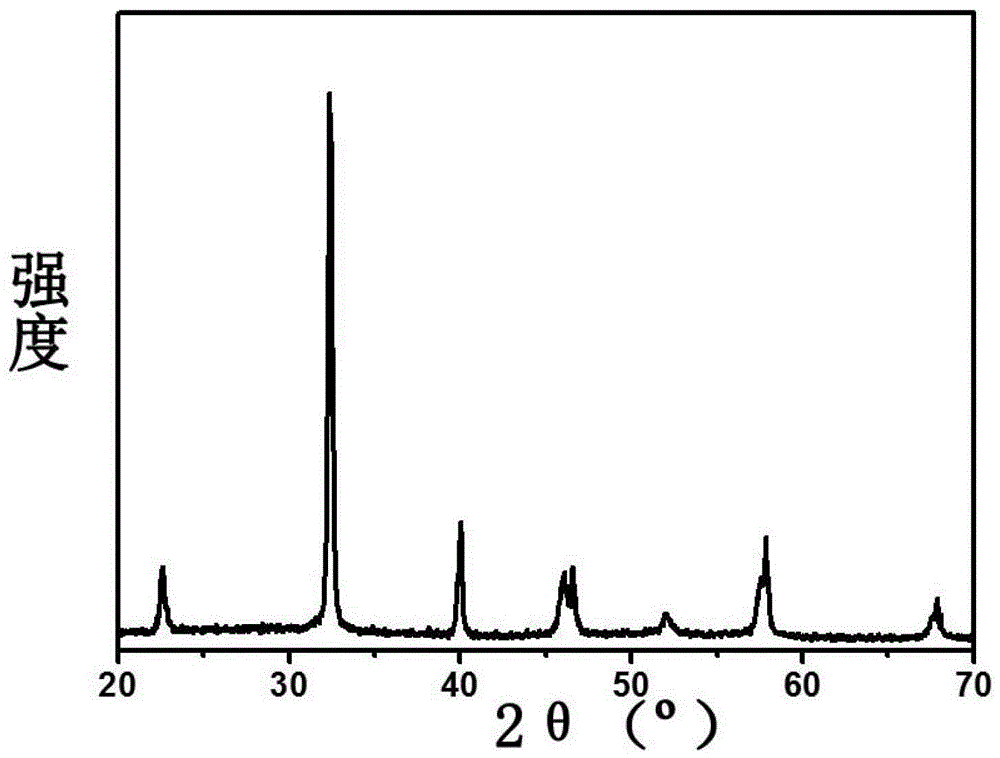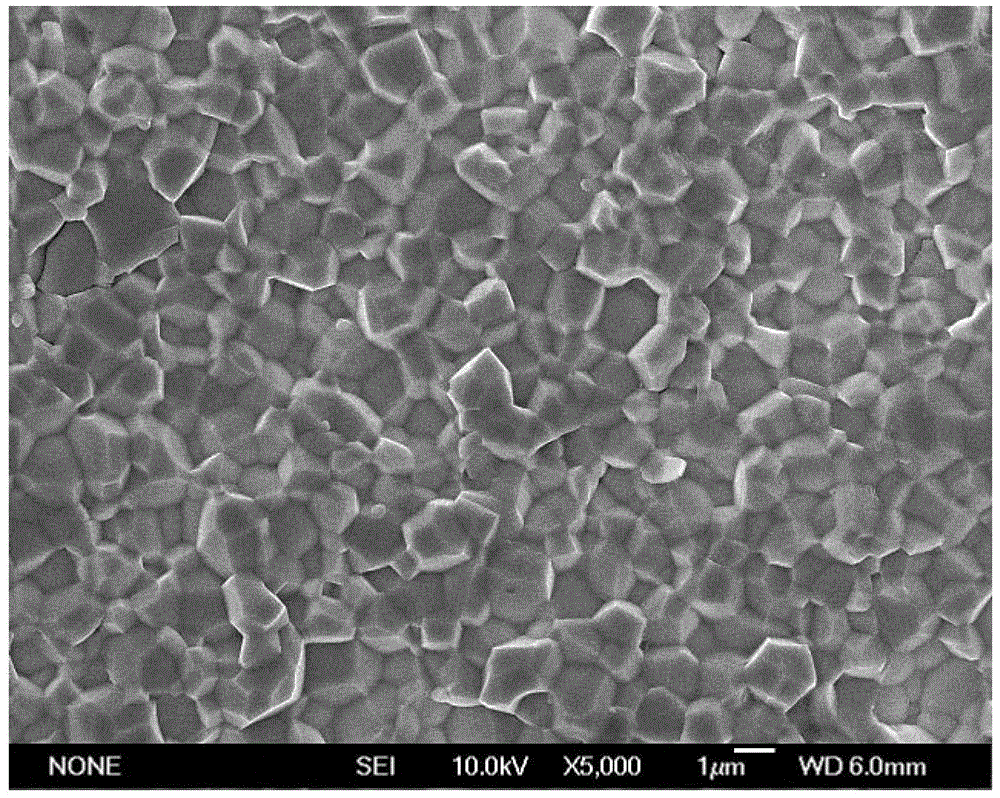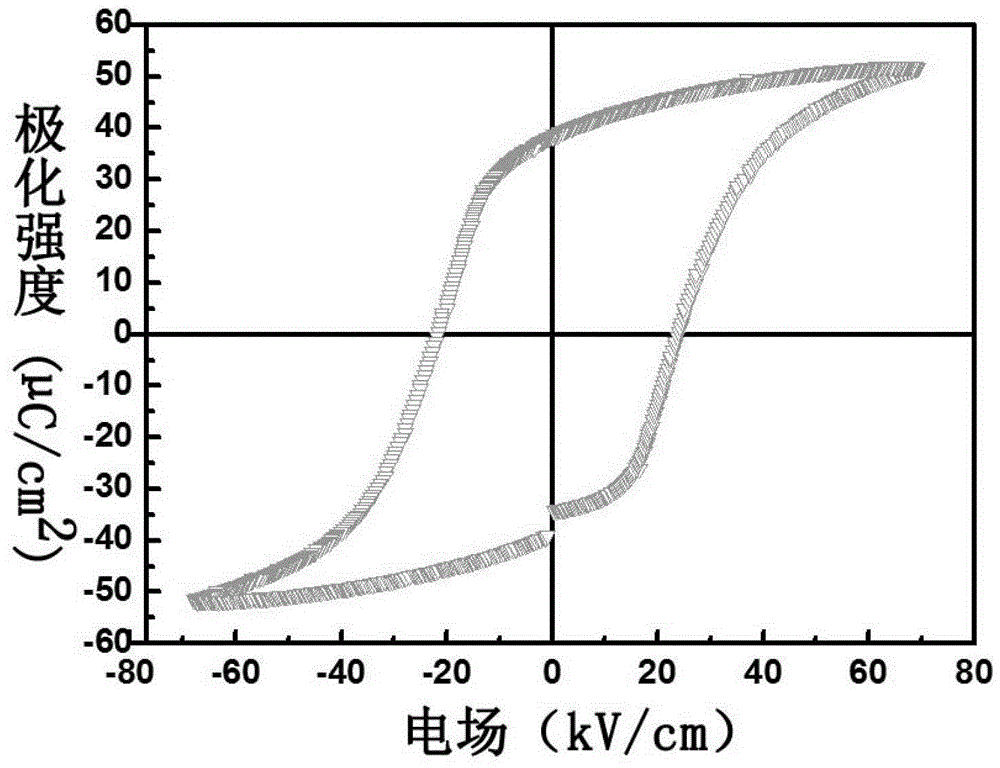Sodium bismuth titanate-barium titanate lead-free transparent electro-optic ceramics and preparation method thereof
A technology of sodium bismuth titanate and electro-optic ceramics, applied in the direction of the structure/shape of the active medium, can solve the problems of difficult control of volatilization, opacity of ceramics, long sintering time, etc. The effect of coefficients
- Summary
- Abstract
- Description
- Claims
- Application Information
AI Technical Summary
Problems solved by technology
Method used
Image
Examples
preparation example Construction
[0031] The invention provides a preparation method of sodium bismuth titanate-barium titanate lead-free transparent opto-ceramic. The chemical composition of the sodium bismuth titanate-barium titanate lead-free transparent opto-ceramic is (1-x)(Na 0.5 Bi 0.5 )TiO 3 -xBaTiO 3 , where 0.05≤x≤0.08. The preparation method adopts an oxygen-passing-hot pressing sintering process, and by controlling the powder synthesis and sintering technology, the generation of impurity phases is suppressed and the pores are eliminated, so as to achieve the purpose of improving the optical transmittance and electro-optical effect of the material. Specifically, as an example, the preparation method of the present invention may include the following steps.
[0032] (1) Ingredients: using Na 2 CO 3 , Bi 2 O 3 , TiO 2 , BaCO 3 As raw materials, each raw material powder is accurately weighed according to the chemical composition of the above-mentioned sodium bismuth titanate-barium titanate le...
Embodiment 1
[0051] Press (1-x)(Na 0.5 Bi 0.5 )TiO 3 -xBaTiO 3 , where x=0.06 ingredients, using φ2mm ZrO 2 The mixed ball was used as the ball milling medium for planetary ball milling for 6 hours. After drying, the obtained raw meal was ground into powder, and then passed through a 200-mesh sieve to keep the components uniform. After sieving, the powder was put into an alumina crucible and pre-fired at 850°C for 2 hours to synthesize. After the synthesis, the powder was pulverized and passed through a 100-mesh sieve, planetary ball milled for 4 hours, and then dried and added with a mass concentration of 6% PVA binder. The pressure is 300MP, the forming mold is a cylinder of φ20×15, and then oxygen-passing-hot pressing is used for sintering. The parameters of the sintering process are: from room temperature to 900°C at a heating rate of 200°C / hour, and hold for 1 hour; then at 100°C ℃ / hour to heat up, and gradually pressurize to 250MPa, then keep the pressure unchanged, after heating...
Embodiment 2
[0053] Press (1-x)(Na 0.5 Bi 0.5 )TiO 3 -xBaTiO 3 , where x=0.05, the ingredients are ZrO with φ2mm 2 The mixed ball was used as a ball milling medium for ball milling for 5 hours, and the obtained raw meal was ground into powder after drying, and then passed through a 200-mesh sieve to keep the components uniform. After sieving, the powder was put into an alumina crucible and pre-fired at 850°C for 3 hours to synthesize. After the synthesis, the powder was pulverized and passed through a 100-mesh sieve and then ball-milled for 4 hours. The mass concentration of 6% PVA binder was added. The molding pressure was 350 MPa, and the molding die was The φ20×15 cylinder was then sintered with oxygen and hot pressing. The parameters of the sintering process were as follows: from room temperature to 830°C at a heating rate of 200°C / hour, holding for 1 hour; then heating at 100°C / hour, and Gradually pressurize to 240MPa, then keep the pressure unchanged, heat up to 1000°C, keep warm...
PUM
| Property | Measurement | Unit |
|---|---|---|
| phase transition temperature | aaaaa | aaaaa |
| density | aaaaa | aaaaa |
| refractive index | aaaaa | aaaaa |
Abstract
Description
Claims
Application Information
 Login to View More
Login to View More - R&D
- Intellectual Property
- Life Sciences
- Materials
- Tech Scout
- Unparalleled Data Quality
- Higher Quality Content
- 60% Fewer Hallucinations
Browse by: Latest US Patents, China's latest patents, Technical Efficacy Thesaurus, Application Domain, Technology Topic, Popular Technical Reports.
© 2025 PatSnap. All rights reserved.Legal|Privacy policy|Modern Slavery Act Transparency Statement|Sitemap|About US| Contact US: help@patsnap.com



